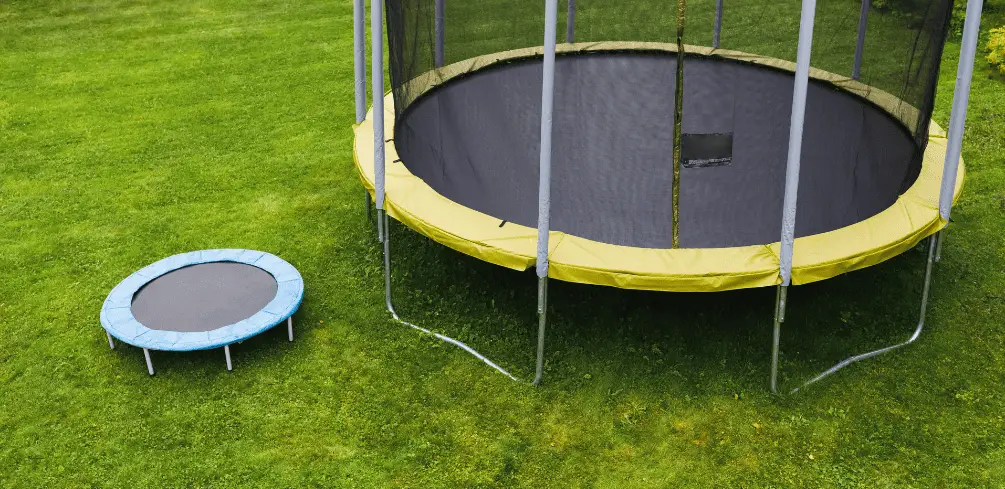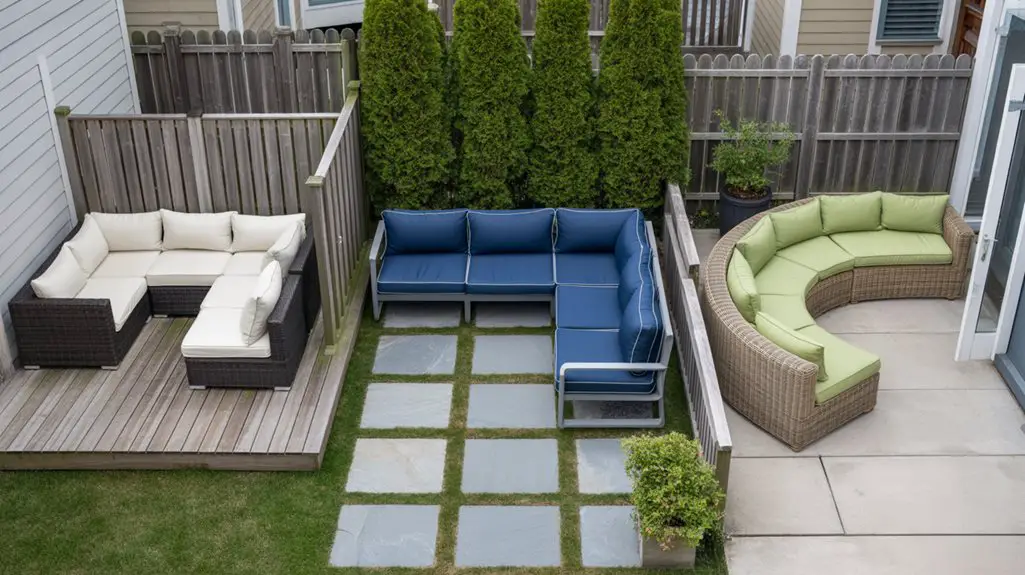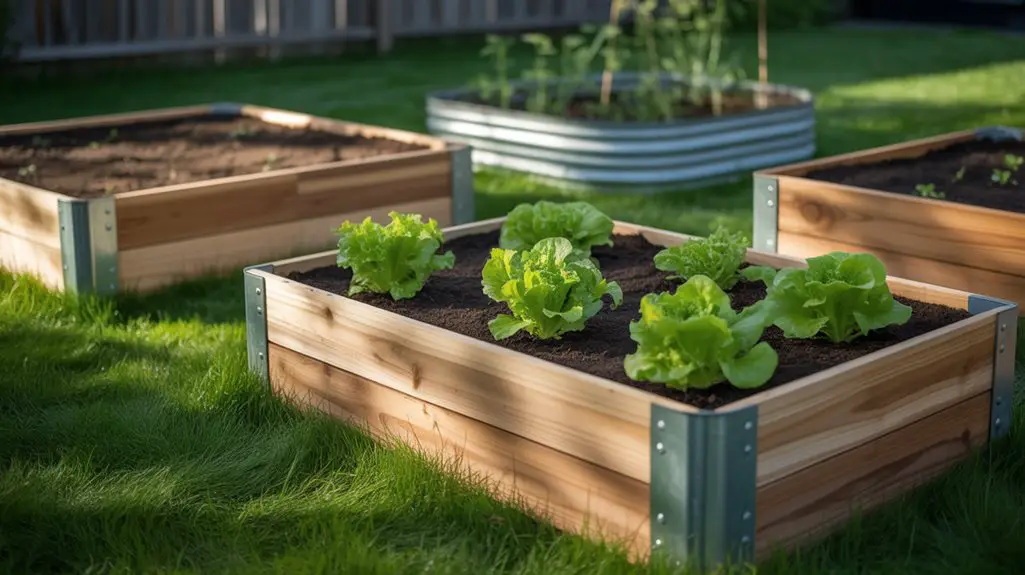When it comes to trampolines, bigger isn’t always better. In this ever-changing world, it’s essential to get your bounce on point – and that means understanding the basics of trampoline sizes before you make a purchase.
If you’re looking for a guide that will help you choose the size that’s right for your needs, look no further! I’m here to provide a time-tested tip: when it comes to using the trampoline, size does matter.
Whether you’re looking for an outdoor activity to keep the kids entertained or just want something to add some extra fun to your backyard barbecue, having the right size trampoline is key.
The good news is that there are plenty of options out there when it comes to choosing the perfect trampoline for your space and budget.
With so many choices available, however, how do you know which size is best?
With this trampoline-size guide in hand, making an informed decision has never been easier!
We’ll cover everything from what average trampoline size works best for kids versus adults, how much space you need in order to fit a trampoline safely and securely, and which features and accessories can enhance your backyard jumping experience.
So sit back, relax, and get ready to jump into all things trampolining – let’s go!
The Basics Of Trampoline Sizing
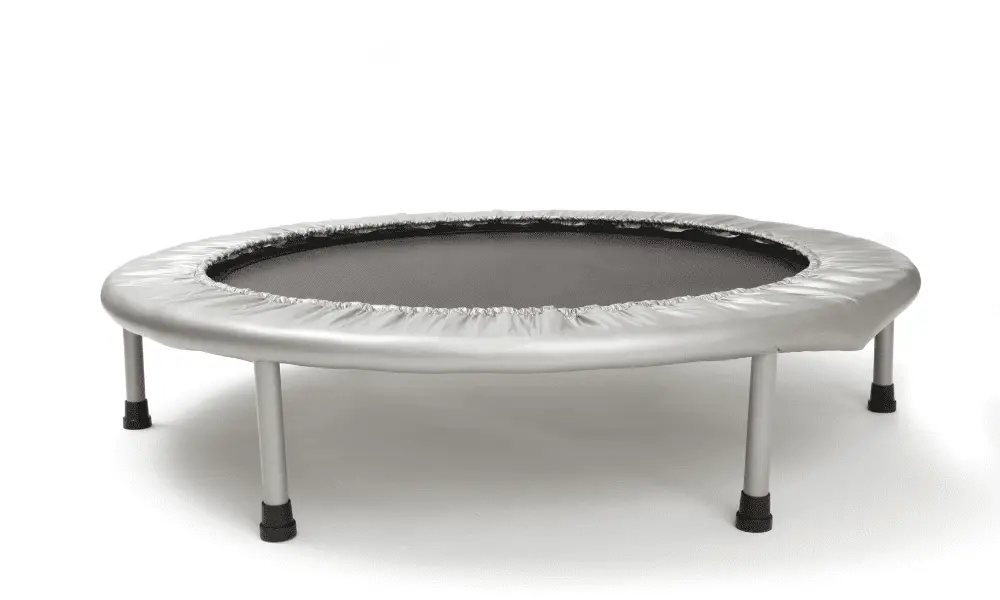
Trampoline sizes come in many shapes and sizes, so choosing the right one for you can seem like a daunting task. But don’t worry – there are some general guidelines that you can use to make sure you get the perfect trampoline for your backyard.
When it comes to trampolines, there are three common types: rectangular, round, and square. Each has its own advantages and disadvantages when it comes to size and shape.
A Rectangle trampoline tends to be larger than other types of trampolines, making them ideal for those who want a bigger jump area. They also have greater stability because they are supported on all four sides by the frame.
A Round trampoline is typically smaller than a rectangular one but offers a large jumping surface without compromising safety or stability.
A Square trampoline is usually the smallest of the three types and provides an excellent option for those with limited space.
The average-size trampoline is around 10-15 feet in diameter and can accommodate up to four people at once. Depending on your needs, you may need a bigger or smaller trampoline than this.
So before you buy, consider carefully how much room you have available and how many people will be jumping at once. With this information in mind, you’ll be ready to move on to the standard dimensions of round models in the next section!
Standard Dimensions Of Round Models

Picture an enchanted garden where whimsical circular trampolines of varying sizes bring joy to every age group. Round trampolines, with their unique shape, have become increasingly popular for bouncing fun.
When shopping for a round trampoline, the first thing to consider is the mat size.
This is measured from the outer edge of one spring to the outer edge of another spring and should be at least 7 feet in diameter for a mini-trampoline, 8 feet or 9 feet for a standard-size trampoline, and 10 feet or larger for an extra-large version.
The bigger the mat size, the more maximum bounce you will get out of your trampoline!
It’s also important to factor in how many people will be using it. For example, if you’re buying a mini-trampoline for one child, then you might want to opt for an 8-foot-diameter model as this can easily accommodate two children at once.
On the other hand, if you’re looking for something that can handle several family members at once, then go with a larger option, such as a 12ft trampoline in diameter. You’ll be able to enjoy maximum bounce and plenty of room for everyone!
No matter what standard trampoline size you choose, make sure that safety is always your top priority when it comes to having fun on a trampoline!
With these tips in mind, you’ll be able to find the right round trampoline size that fits your needs perfectly – giving you and your family plenty of safe bouncing fun!
How To Pick The Right Size For Adults And Families

Picking the right trampoline size can be overwhelming, especially if you intend to use it as a family. Rectangular trampolines are the most popular choice for adult and family use due to their larger size, weight limit, and shape.
The standard trampoline sizes range from 8’x14’ all the way up to 16’x25’, so there is something for everyone! Large-size trampolines are great for families with multiple children who want to jump together and have plenty of space.
It’s essential to make sure that whatever size trampoline you choose fits in your backyard and meets your needs.
When deciding on the correct trampoline size, it’s essential to consider how much room you have available in your backyard as well as who will be using it.
If you plan on having multiple people jumping at once or require more area for tricks, then opting for a larger size may be the better option.
Additionally, make sure that whatever model you pick has enough weight capacity to accommodate all of your jumpers!
No matter what type of trampoline you choose, safety should always come first. Make sure that whichever model you select meets safety guidelines and has safety features such as secure padding around the springs and a safety net.
This will ensure that no one gets hurt while having fun! With these tips in mind, it’s time to look into what maximum weight limit each model can handle before making your final decision.
Maximum Weight Limit For Each Model

When considering which trampoline size is best for you, it’s important to consider the maximum weight capacity of the model. This will ensure that everyone in your family or group can safely use the trampoline without any accidents.
The weight capacity of each trampoline will vary depending on a trampoline’s price, size, or model.
For instance, a smaller, more affordable trampoline may have a lower weight capacity than a larger, more expensive one. Make sure that you factor in this information when looking at trampoline prices.
Another thing to keep in mind is how much free space you have available for your trampoline. If you don’t have enough room for a large trampoline, then opting for a smaller one may be the better choice.
That way, everyone can still enjoy using the trampoline without worrying about it taking up too much space. Ultimately, the perfect size trampoline should be determined by the weight capacity and free space you have available.
Now that you know what to look for in selecting a trampoline size based on its maximum weight limit, let’s move on to discussing rectangular vs. round trampoline models.
Rectangular Vs. Round Trampoline Models

Choosing the right trampoline size is like deciding which ice cream flavor to get on a hot summer day – there are so many options, and it can be difficult to make the right choice.
Rectangular trampolines, square trampolines, octagonal trampolines, and round models – each has its own advantages and disadvantages.
Knowing which type of trampoline will best suit your needs can help you make an informed decision when purchasing a full-size trampoline.
Rectangular 17 ft trampolines are perfect for gymnasts or those who want to practice their flips because they provide more space for these activities. They also offer superior stability due to their four-sided shape and have greater bounce than round models.
However, rectangular trampolines tend to be larger and more expensive than other shapes, so they may not fit in some backyards.
Round trampolines are great for smaller yards because they take up less space than rectangular models but still deliver plenty of bounce for recreational use.
The circular shape also allows users to jump in the center without risking impact with a frame or mat edge, like on some rectangular models.
Although round trampolines may not provide as much stability as rectangular ones, they still offer enough support for casual bouncing and other recreational activities. They are also the most popular trampolines families purchase.
No matter which type of trampoline you choose, it’s important to measure before making a purchase in order to ensure that it will fit perfectly into your desired area.
Measuring A Trampoline For The Perfect Fit
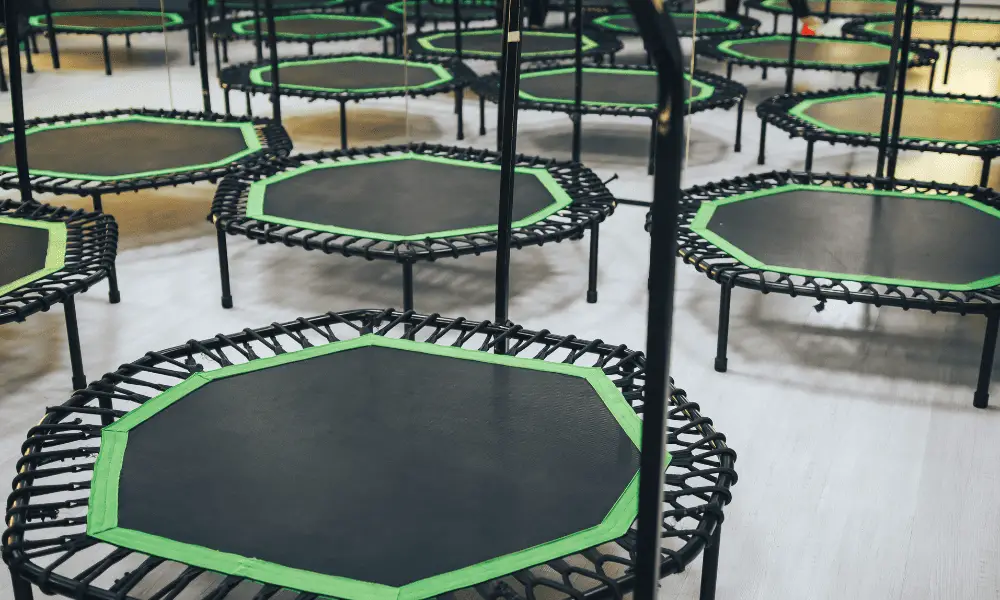
Measuring for the perfect trampoline size is an important step in finding the best trampoline fit for your available space. Using a tape measure, start by measuring the area where you plan to place the trampoline.
Make sure to measure both length and width, so you can have a clear understanding of how much room you have available. Remember that you will need enough space around the trampoline for safety purposes.
Next, take measurements of any trampolines that interest you. Determine the diameter size and compare it to your available space measurements to make sure it will fit comfortably without overcrowding the area.
This will help ensure that your trampoline purchase is right for your home and family’s needs.
Finally, inspect surrounding areas like trees or other structures near your desired trampoline spot to make sure they won’t interfere with jumping activities.
Taking these steps now will help avoid potential problems down the road when it comes to using and enjoying your new trampoline safely.
With careful consideration of all factors, finding the right trampoline size for your family should be easy! Now let’s consider height considerations for different models.
Height Considerations For Different Models

As we’ve discussed, measuring a trampoline for the perfect fit is essential.
But what about height considerations?
Here are some tips on the height of different trampolines, though this usually isn’t an issue unless you have something above the trampoline, which we do not recommend:
When considering these sizes, it’s essential to keep your child’s safety in mind above all else. Make sure that the size you choose isn’t too large or unwieldy for them to handle quickly and securely.
With the right size and weight capacity, your child can have fun without risking their safety.
Now that we’ve covered the basics of height considerations let’s take a look at the variations in backyard trampoline sizes available today.
Outdoor Trampoline Dimensions To Consider

When it comes to choosing a trampoline for your outdoor space, there is more to consider than just the size of the area.
It’s important to understand the difference in trampoline sizes and how much space you need around them to ensure safety.
The first thing to keep in mind is that bigger isn’t always better. A larger trampoline may seem like a great idea, but if it takes up too much of your yard or garden, it could lead to problems down the road. Plus, more maintenance and cleaning.
Here’s a look at some of the common sizes for outdoor trampolines and what they can accommodate:
| Size (ft) | Intended Use | Jumper Capacity |
|---|---|---|
| 8-10 ft | Kids and Beginners | 1-2 Jumpers |
| 12-14 ft | Family Fun | 3-5 Jumpers |
| 15-17 ft | Intermediate Jumper | 4-7 Jumpers |
| Olympic Size | Gymnasts and Acrobats | 6+ Jumpers |
It’s important to remember that these are only guidelines for trampoline sizes. Depending on the type of activity you plan on doing, you may need a larger or smaller area.
For instance, a 12 ft trampoline will be too small for gymnastics or acrobatics but perfect if you’re just looking for a place for your kids to jump around with their friends.
On the other hand, an Olympic size trampoline will give gymnasts and acrobats plenty of room while still leaving enough space around the edges for safety.
So no matter what type of activity you plan on doing, make sure you find the right size before making any purchases!
What Is The Best Size For Gymnastics?
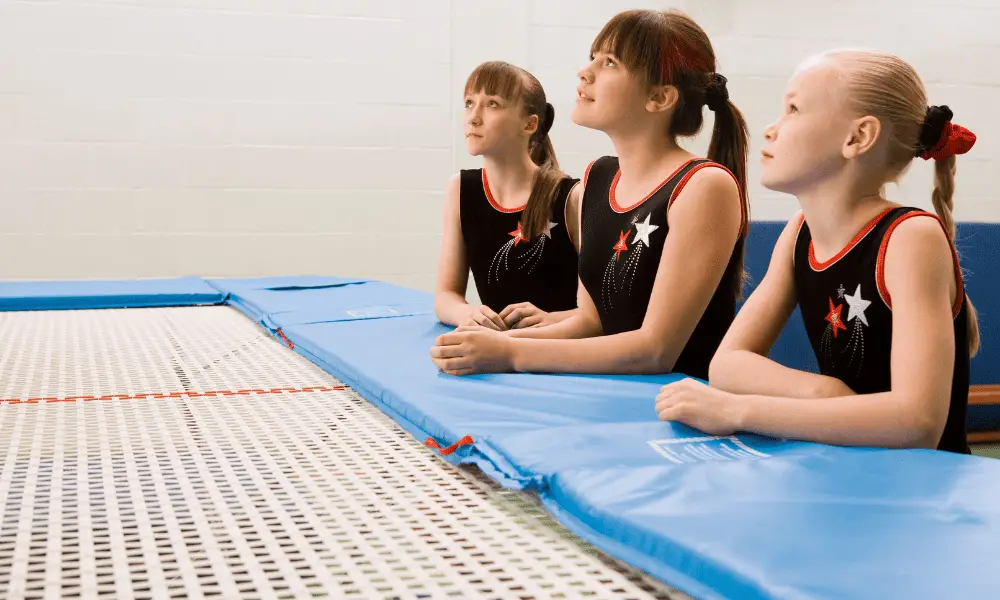
When considering what size trampoline is best for gymnastics routines, it’s critical to look at the size of the trampoline mat. The larger the trampoline, the more space there will be for flips and other gymnastic moves.
Bigger trampolines are great for more advanced gymnastics routines, but it’s not necessary to get a huge trampoline if you are just starting out. An ideal-size trampoline for beginner and intermediate gymnastics is one that is 14 feet in diameter.
This size of trampoline gives enough space to practice basic skills and progress to harder tricks as you get more comfortable with the equipment.
In general, if you’re looking for a bigger trampoline for more advanced gymnastics routines, a 14-17 foot diameter is usually sufficient. However, depending on your skill level or any specific requirements you have, an even larger trampoline may be needed.
For reference, Olympic-sized specifications require a minimum of 16 feet in length and 8 feet in width. Whatever size you choose, make sure that the construction of the frame and mat are safe and durable enough to handle all your jumps and flips!
Olympic-Size Specifications
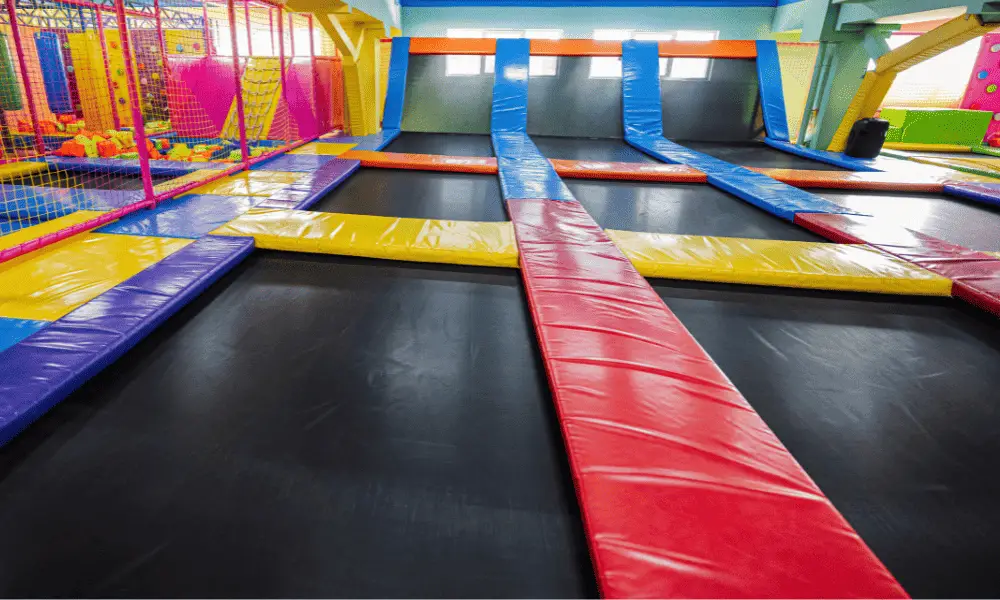
Olympic-size trampolines are the biggest trampoline, of all sizes, with dimensions up to 17 feet. Perfect for gymnastics and competitive sports, these larger trampolines provide the best bounce and greatest space for athletes.
They come at a cost, though – larger trampolines can be expensive, but they are well worth the investment if you want to take your trampoline experience to the next level.
Plus, they come in a variety of shapes, so you can customize your trampoline size depending on what activity you plan to use it for.
Before deciding on an Olympic-size trampoline, weigh the pros and cons of different shapes to determine which one is best for you.
Pros And Cons Of Different Shapes
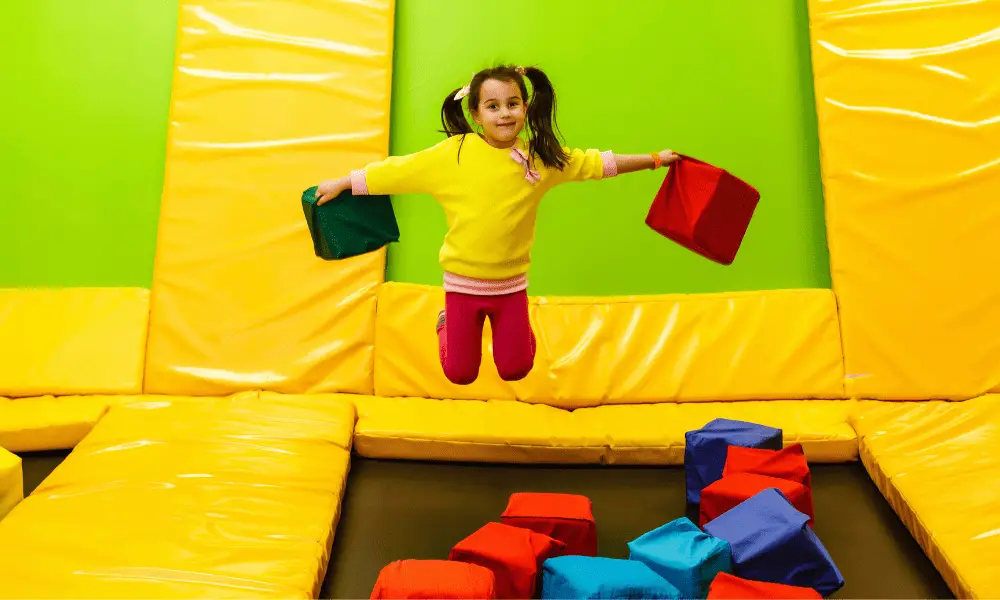
When it comes to choosing a trampoline size, there are pros and cons associated with different shapes. Round trampolines are the most common type of trampoline and offer greater stability thanks to their shape, making them ideal for younger jumpers.
They also tend to be more affordable than other shapes and sizes of trampolines. Rectangular trampolines offer more jumping space than round ones, which can make them the better choice for larger families or frequent backyard fun with friends.
However, they also cost more than round trampolines because they require a larger jumping mat and frame to support the extra size.
Oval-shaped trampolines provide a good balance between trampoline price and size; they’re usually not as expensive as rectangular models but still provide ample room for jumping.
They’re often recommended for smaller backyards since they don’t take up too much space. The downside is that oval-shaped frames don’t typically offer as much stability as round or rectangular trampoline frames do.
No matter which type of shape you choose, it’s important to consider the age and experience level of your jumper when selecting a trampoline size.
Be sure to get one that fits your budget and provides enough space for all users to safely enjoy their time on the trampoline!
Conclusion
As we have seen, choosing the right trampoline size is a big decision. It’s important to get the size that’s just right for your needs, whether you’re looking for a small trampoline for kids or an Olympic-sized one for serious athletes.
At the end of the day, it all comes down to personal preference and what works best for you and your family.
That said, I think we can all agree that the best-size trampoline is the one that fits in your backyard! My advice? Just remember: Bigger isn’t always better; sometimes it’s just bigger! So pick a trampoline size carefully and make sure it fits in with your current lifestyle.
Now that you know all there is to know about trampoline sizes, you can go out and find the perfect fit for you and your family! So don’t be afraid to take the plunge and start bouncing today – trust me, you won’t regret it!

